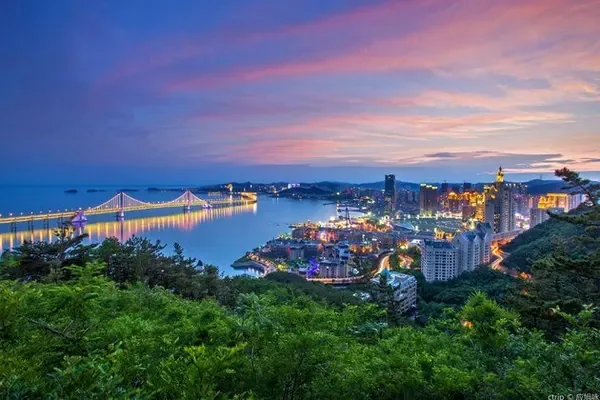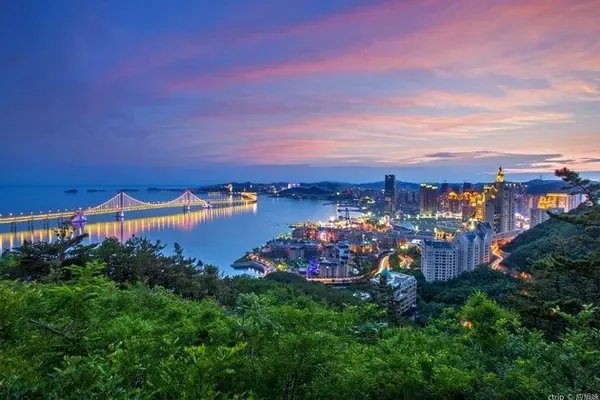In the early morning of the next day, go to Yinchuan Crescent Square and take a special tourist bus to the Western Xia Royal Tombs and Helan Mountain Rock Painting Scenic Area.
Western Xia Royal Tombs
The Mausoleum of the Western Xia Dynasty is located at the eastern foot of Helan Mountain in the western suburbs of Yinchuan City. It is the location of the tombs of the emperors of the Western Xia Dynasty. There are nine main tombs of emperors and several accompanying tombs in the mausoleum area. The largest of these is Mausoleum No. 3, which is presumed to be the mausoleum of the founding emperor (Li) Yuanhao of Xixia—Tai Mausoleum.
In 1038 A.D., Yuan Hao, the son of Li Deming, the lord of the Xia Kingdom, proclaimed himself emperor and established the country. The Xixia Dynasty was a feudal dynasty established mainly in the upper reaches of the Yellow River in Northwest China, with the Dangxiang Qiang as the main body.
Entrance to Xixia Royal Tombs Scenic Area. The Xixia characters of the gate are translated from right to left into Chinese meaning: white, high, country, big. That is, "Dabai Gaoguo" means the country name of Xixia.
Western Xia Museum
The Xixia Museum was opened as a history education base at that time, and primary and secondary school students can visit it for free.
Here you can fully understand important historical facts such as Xixia's geographical location, territory, historical origin, establishment, founding, development, and decline, especially the founding emperor Yuan Hao of Xixia. The history of the development of the country's governance, and even the subsequent arrogance and domineering, great achievements, causing internal and external troubles, and finally leading to the decline and final demise of the dynasty and other process historical facts.
A statue of Yuan Hao.
Next to the Xixia Museum is the Xixia History Art Museum. Inside, through a series of figure statues and scene reproductions, it vividly shows the development process of the Xixia Dynasty at various stages.
Xixia Characters (Forest of Steles)
No. 3 Cemetery Ruins
The No. 3 cemetery is located in the south-central part of the cemetery area. It is speculated that it is the mausoleum of the founding emperor of Xixia, Wei Ming Yuanhao (Li Yuanhao) - Tailing.
The entire mausoleum faces south and is magnificent. As soon as you enter from the entrance of the cemetery, the most conspicuous thing is the largest mound.
From a distance or in photos, it is not obviously tall because the reference object behind it is too vast. The closer you get, the more you feel its majesty, height and majesty.
It should be said that if the entire 58 square kilometers of the cemetery is not protected as a historical site, people will only notice that there are yellow mounds rising up on the large area of loess scattered with rubble, scattered under the vast sky, silently Standing there, mysterious but easy to forget.
Walk along the center line of the cemetery towards the main mausoleum. As you approach it, the terrain under your feet gets higher and higher.
Looking up at this huge "solitary grave", it stands at the foot of Helan Mountain, looking lonely and desolate. There is no evidence for rivers and mountains in the present and ancient times. In the dynasty that once belonged to him, it symbolized splendor and pride. For thousands of years, the stars have changed, and the royal family has risen and fallen, leaving only loess ruins.
Like a tall pyramid, the spire points to the blue sky. At this time, I remembered that the Tomb of the Western Xia Dynasty was also called the "Pyramid of the East".
Because the distance is too far and the weather is too hot, we did not go to the farther Shuangling and other farther mausoleums. We just closed our eyes under the vast sky, traveled through time and space, and felt the lofty ambitions of the old gold and iron horses. ,Will suffice.
The distant view of the Western Xia Royal Mausoleum.
Helan Mountain Rock Paintings
Helan Mountain Rock Painting Scenic Spot is another scenic spot of Helan Mountain. Before going there, I always thought that it had something to do with the Xixia Royal Tomb, but it was a big mistake. It is an independent scenic spot with more ancient historical value that shows the prehistoric civilization of Helan Mountain through the historical materials of petroglyphs carved on the rocks.
World Rock Art Gallery
On the rocks in the hinterland of Helan Mountain, a large number of stone carvings dating back to 3,000-10,000 years ago have been found, and the scientific name is called petroglyphs. The forms of the petroglyphs include scenes of grazing, hunting, entertainment, and labor, and the patterns include various animals, people, and pictographic symbols, which are powerful witnesses of the existence of ancient human social life in the Helan Mountain area.
The famous sun god petroglyph rubbing stele (displayed in the World Rock Art Museum). But then headboy also climbed to the mountain to see the real thing.
Another valuable petroglyph rubbings.
From the entrance of the scenic spot to the mountain carved with petroglyphs, you need to take a car in the scenic spot to enter. The "rock" with paintings is deep in the mountain. The cars in the scenic area are not scheduled to leave. In the afternoon, you need to pay attention to the time to go back and forth into the mountains, so as not to miss the trains back to Yinchuan.
Rock paintings, more precisely rock carvings, are pictographic patterns carved on stones by the ancients to record the state of social and cultural development at that time. Due to the erosion resistance of stone, it has been preserved as a precious material for thousands of years.
The shape of the stones in Helan Mountain looks a little hideous, but the Helan Mountain stone itself is fine in texture and uniform in structure, so it is a good stone for making inkstones and seals. We just brought back a few bucks.
The totem of the sun god is worshiped as a god by the local people, and the mountain is covered with red cloth belts for blessing. There are piles of rocks on the mountain to go up, and every step is sloppy, but headboy still thinks of a way to climb up, and insists on going to see what's going on.
I got him a camera ahead of time, and finally took a real photo of the "Sun God". It is engraved on a stone on the sunny side of the mountain.
It is in these primitive mountains that are farther and farther away from modern human society that traces of human ancestors are found. Therefore, the mountains and rivers are long, and the history is long.
Monkey pattern.
Two paintings with one stone.
...
There are many mountains and hills in Helan Mountain.
Return to Yinchuan at around 6 o'clock in the evening.
【To be continued】Next issue: Yinchuan City, Nanguan Great Mosque
The above content comes from the original public account [Childhood on the Road], focusing on parent-child self-help travel, covering all provinces and autonomous regions across the country, welcome to search and follow.


